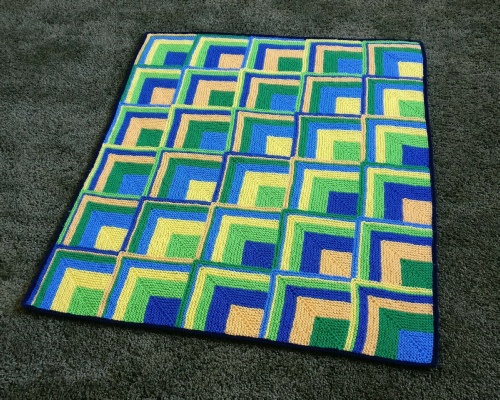





|
Back in 2014 I watched a Numberphile video, by my friend Matt Parker, about Lucas
Numbers. At the time I used the numbers to make a toilet roll cover which I referred
to as Loo- Most people are familiar with Fibonacci numbers but Lucas numbers are less well- | |||
|
|
Fibonacci Numbers |
0, 1, 1, 2, 3, 5, 8, 13 … | |
|
For craft purposes Lucas numbers seem to be much more useful than Fibonacci numbers. Firstly, the Fibonacci numbers should really begin with zero though this is quite often omitted, in writing, and when the series is represented in other ways.
To be the Lucas series or the Fibonacci series the numbers must be used in the correct order. It is never correct to mix them up. I have seen very many projects labelled as Fibonacci where the numbers 1, 2, 3, 5, 8 … have been used in any order to create stripes making them nothing more than random numbers. Once I had decided I wanted to make mitred squares using Lucas numbers I looked for a pleasing arrangement. Using the first six terms of the series gives a total of 28 ridges (2+1+3+4+7+11), which makes a square of approximately 15 cm (6”). I thought about using the numbers in reverse, from the outside of the square but decided I preferred the small numbers at the edges. Using six terms and six colours meant that I could rotate the colours to create six
different- One of the advantages of rotating the colours in the squares is that a complete column uses equal amounts of each colour. I played with the idea of using bigger squares. The next size up would need 46 ridges, which would result in a square of approximately 23 cm (9”). To rotate the colours in the same way as for the baby blanket I would need to make seven different squares. The blanket would have been 160 cm (63”). This would be a reasonable length for an adult blanket. Larger squares would be unwieldy. Each new number/colour that is added requires more than one and a half times as much yarn as has already been used. The relationship of the numbers in the series tends towards the Golden Ratio (which is written as the Greek letter φ or phi) so the lengths and areas in the Lucas number squares are closely related to the Golden Ratio. Many people believe that is why artists find such shapes appealing. | |||
|
|
| ||